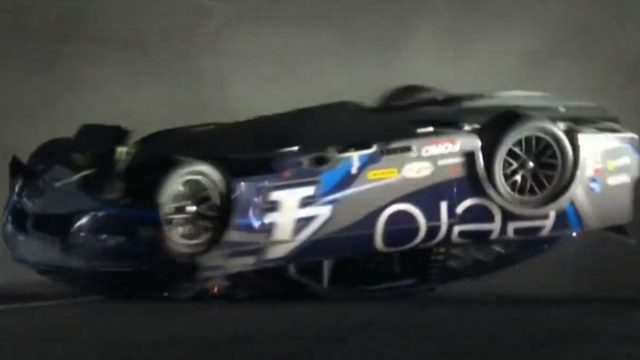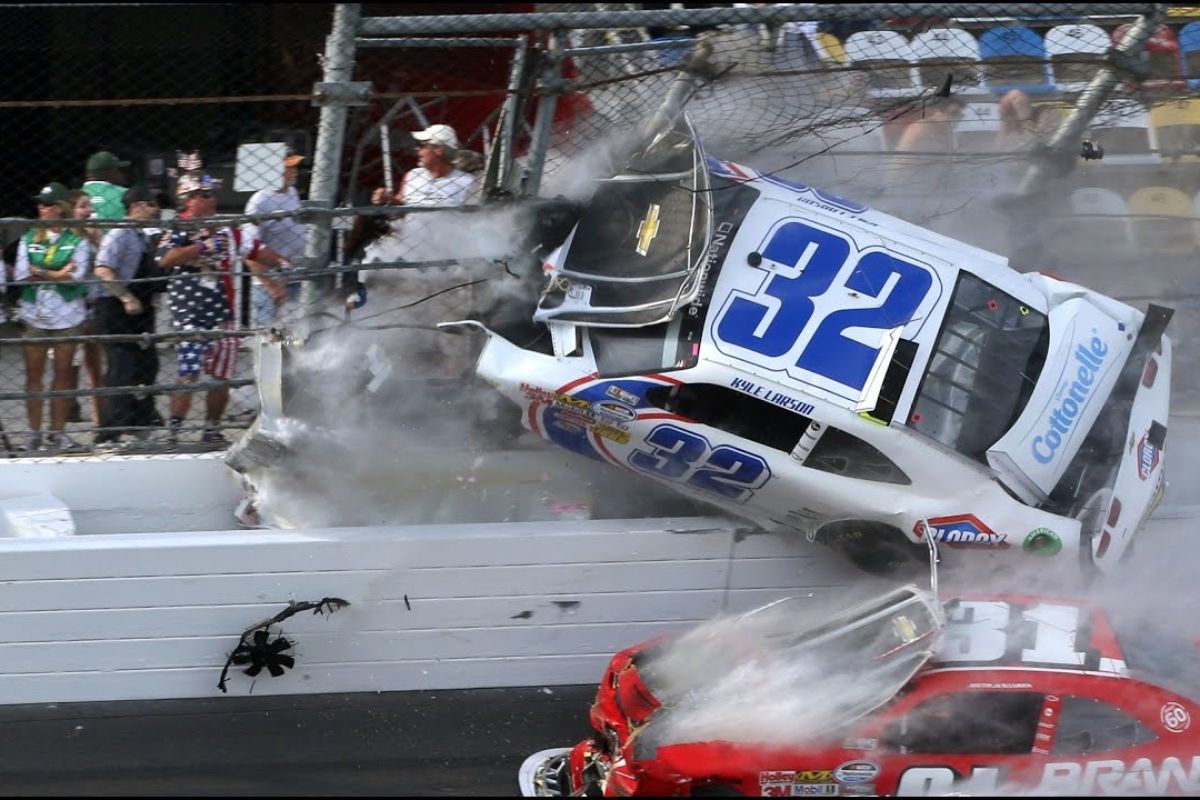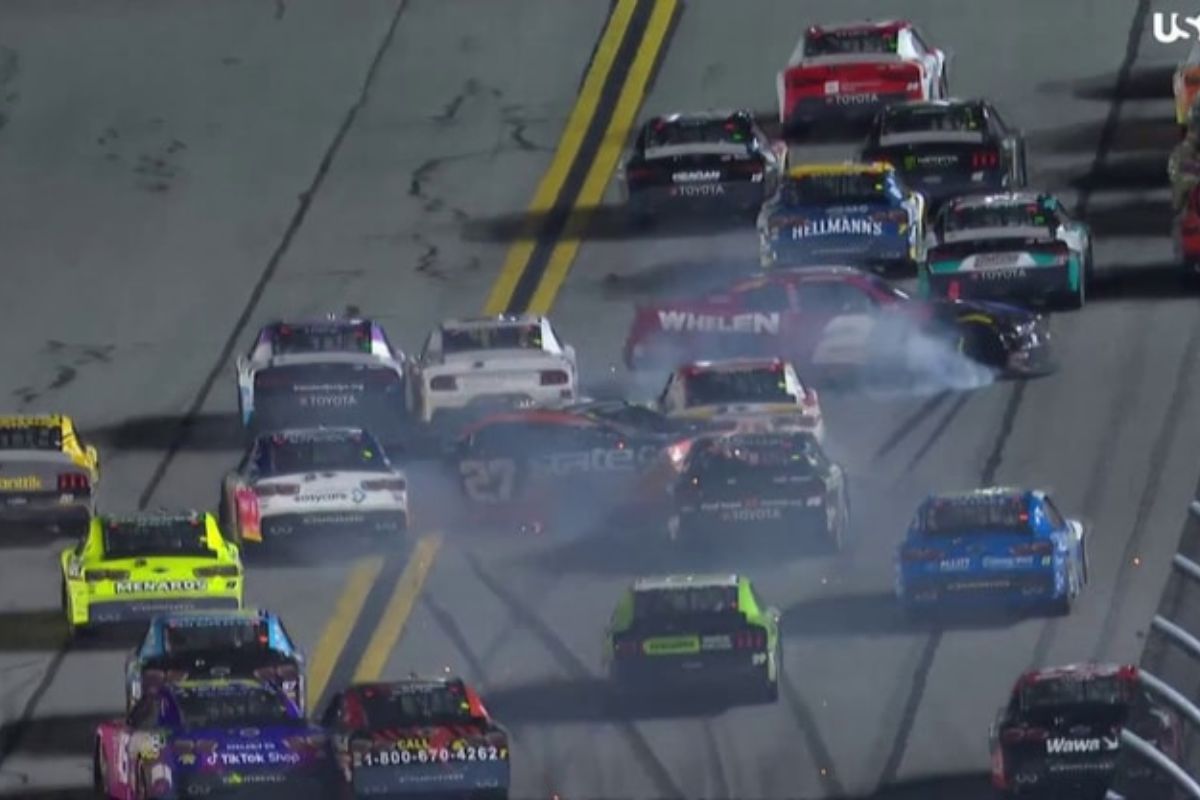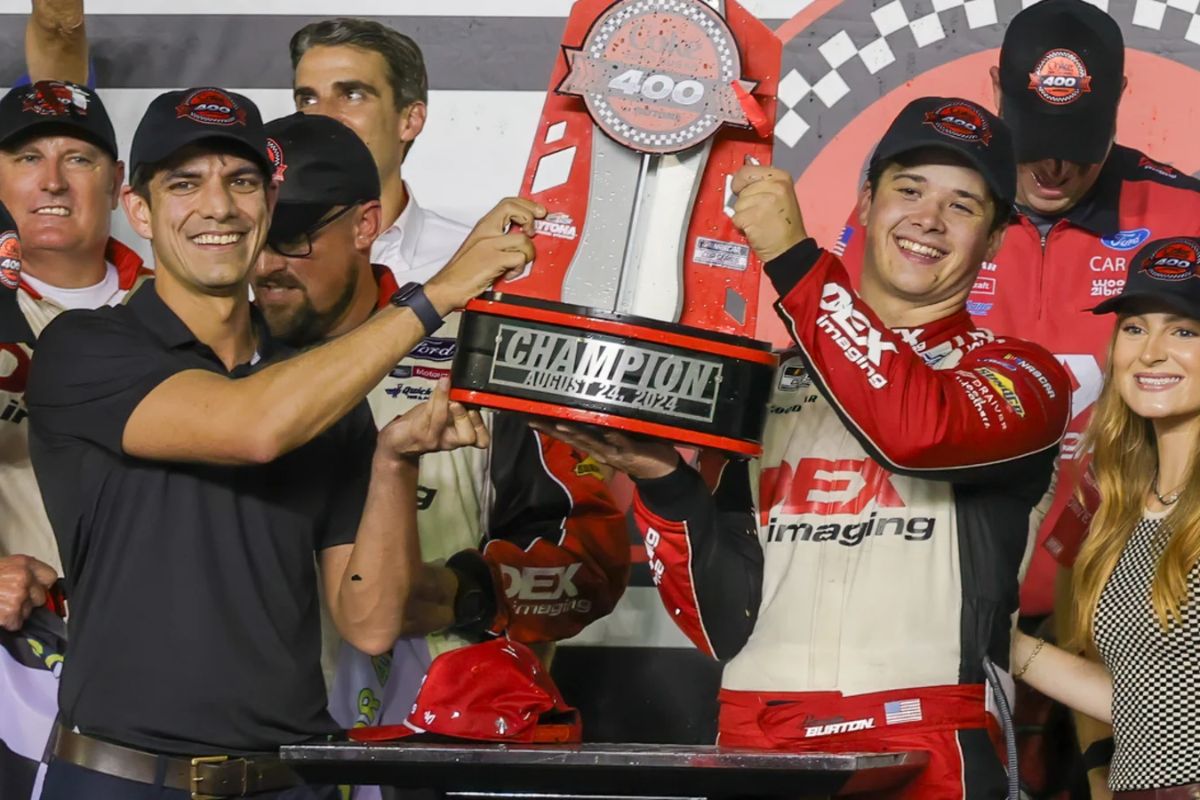Josh Berry’s Wild Crash at Daytona: Josh Berry‘s dramatic crash at Daytona during the Coke Zero Sugar 400 has raised critical questions about the efficacy of NASCAR’s newly implemented safety mechanisms, particularly the air deflectors designed to mitigate high-impact collisions. While advancements in safety technology were expected to improve driver protection, the incident revealed considerable shortcomings when Berry’s vehicle overturned following a forceful encounter with Austin Cindric. This event not only highlights the need for a reevaluation of current safety protocols but also prompts an examination of how these failures can influence future regulations and driver safety standards in motorsports.
Key Highlights
- Josh Berry’s crash at Daytona involved his No. 4 Ford Mustang flipping upside down, raising concerns about safety mechanisms’ effectiveness.
- The incident was triggered by aggressive driving from Austin Cindric, questioning the design of NASCAR’s new air deflectors.
- Multiple crashes during the race, including one involving 17 cars, highlighted the unpredictable nature of racing and its risks.
- Berry acknowledged NASCAR’s safety advancements but expressed disappointment at the failure of the new mechanisms during his incident.
- The crash has prompted calls for a review and potential redesign of safety protocols in motorsports to enhance driver protection.
Incident During the Coke Zero Sugar 400
Although the introduction of NASCAR’s new safety mechanisms aimed to improve driver protection, the incident during the Coke Zero Sugar 400 clearly emphasized their shortcomings. In a critical moment of the race, with only two laps remaining, driver Josh Berry found himself embroiled in a high-stakes battle for the win. In a dramatic turn of events, aggressive maneuvers on the inside lane resulted in Austin Cindric losing control, sending Berry’s No. 4 Ford Mustang into a perilous spin and subsequently flipping upside down.
Take a look at what happened on the backstretch at @DAYTONA. @joshberry exited the vehicle and gave a thumbs up to the crowd. pic.twitter.com/C67wMUvXvD
— NASCAR (@NASCAR) August 25, 2024
This harrowing crash not only echoed the unsettling nature of Corey LaJoie’s previous incident but also raised considerable concerns regarding the efficacy of NASCAR’s recently implemented air deflectors or shark fins. Designed to mitigate the risk of cars flipping during high-speed collisions, these mechanisms failed to prevent Berry’s vehicle from lifting off the ground, thereby exposing the limitations of current safety protocols.
The violent nature of the crash, characterized by Berry’s car flipping through the air, highlights the unpredictable dynamics of stock car racing, particularly at high-velocity tracks like Daytona.
Despite the alarming nature of the incident, it is worth noting that Berry emerged unscathed and was cleared by medical personnel. However, the event serves as a clear reminder that while NASCAR continues to innovate in driver safety, the effectiveness of these measures must undergo rigorous evaluation to guarantee they meet the evolving challenges presented by competitive racing scenarios.
Josh Berry’s Reaction
In the aftermath of the harrowing crash, Josh Berry expressed a mix of relief and disappointment, emphasizing his respect for NASCAR’s safety advancements despite the incident. As a rookie driver, Berry was in contention for the lead and showcased remarkable skill throughout the race, further amplifying the letdown of not converting a strong performance into a victory. His #4 Ford, which had been performing admirably, ultimately succumbed to the rigors of competition during the final laps, leading to a notable crash that raised questions about the effectiveness of NASCAR’s safety measures.
Despite the severity of the incident, Berry maintained a commendable perspective, stating, “Yeah I’m good. It probably wasn’t as bad as it looks… I just wanna thank everybody at Stewart Haas Racing, Ford, and NASCAR for building safe race cars.” This acknowledgment highlights his awareness of the inherent dangers in motorsport and an appreciation for the safety innovations that have been implemented.
Berry’s disappointment was palpable as he reflected on the missed opportunity: “Man, I’m bummed because we had one hell of a night going… We were so strong; I’m really proud of the job I did tonight and really proud of how the whole team did.”
Multiple Crashes in the Race
The Coke Zero 400 race was marred by multiple crashes, considerably impacting the outcomes for several key competitors. The most notable incident occurred late in Stage 2, involving a total of 14 cars and resulting in substantial consequences for playoff contenders. Race leader Michael McDowell‘s car spun across the field, culminating in a precarious moment when it became airborne, striking Joey Logano‘s #22 vehicle. This incident not only entangled McDowell and Logano but also ensnared several other prominent drivers.
Bubba Wallace, who had narrowly avoided an earlier collision, was ultimately caught in the tumult of this major crash. The collision also caught Kyle Larson and Tyler Reddick, who were engaged in a fierce battle for the regular-season championship. Their involvement in the crash underlined the unpredictable nature of restrictor plate racing, where fortunes can change in an instant.
The consequences of this crash extended beyond the immediate damage to vehicles; it also reshaped the playoff landscape. Key names, once considered frontrunners, found themselves jeopardizing their postseason aspirations due to the fallout from this chaos.
The First Big Wreck
As the chaos of the Coke Zero 400 unfolded, the primary notable incident emerged on Lap 61, igniting a chain reaction that would dramatically alter the course of the race. Corey LaJoie and Noah Gragson were the catalysts for this initial big wreck, which ultimately involved 17 race cars and showcased the precarious nature of racing at Daytona.
The scale of the wreck was staggering, characterized by:
- Prominent Drivers: Notable competitors such as Denny Hamlin, Chase Elliott, and Austin Dillon found themselves embroiled in the melee, underscoring the race’s unpredictability.
- Heavy Damages: Among those affected, Ross Chastain of Trackhouse Racing sustained considerable damage, with a makeshift tape job barely holding his vehicle together, a demonstration of the relentless pressure of the race.
- Strategic Implications: The crash not only reshaped the standings but also forced teams to reassess their strategies, recognizing that even the slightest mistake could lead to catastrophic outcomes.
The involvement of multiple high-profile drivers not only heightened the drama but also raised questions about safety protocols and the efficacy of existing mechanisms.
As teams scrambled to adapt post-wreck, the event served as a glaring reminder of the inherent dangers of NASCAR racing, especially on a track as notorious as Daytona.
The initial big wreck of the race set a tone of urgency and caution that reverberated throughout the remainder of the Coke Zero 400.
Harrison Burton’s Victory
Harrison Burton’s victory at Daytona marked a crucial moment in the NASCAR Cup Series, serving as his initial win and amplifying the playoff race with only one event remaining in the regular season. This win not only raises Burton’s status within the series but also greatly alters the competitive landscape heading into the final race. With the pressure mounting and only one spot available for those vying for playoff contention, the stakes have never been higher.
The victory highlights the unpredictability of the season, as several drivers are now forced to recalibrate their strategies.
As competitors analyze the Daytona results, the focus shifts toward the final race, where every moment will count. The dynamics of the playoff race have intensified, and the pressure to perform is palpable. Harrison Burton’s victory not only cements his place in NASCAR history but also serves as a reminder of the unpredictable nature of motorsport, where skill, strategy, and a touch of luck converge in thrilling harmony.
News in Brief: Josh Berry’s Wild Crash at Daytona
The crash involving Josh Berry during the Coke Zero Sugar 400 emphasizes considerable shortcomings in NASCAR’s safety mechanisms, particularly the air deflectors designed to protect drivers. Despite technological advancements, the incident raises critical questions regarding the effectiveness of current safety protocols in high-speed racing environments. The aggressive driving exhibited by Austin Cindric highlights the need for an in-depth analysis and potential redesign of safety features to improve driver protection and minimize the risk of similar incidents in the future.
ALSO READ: Josh Berry Expresses Gratitude to Kevin and DeLana Harvick as He Returns to Racing Roots



